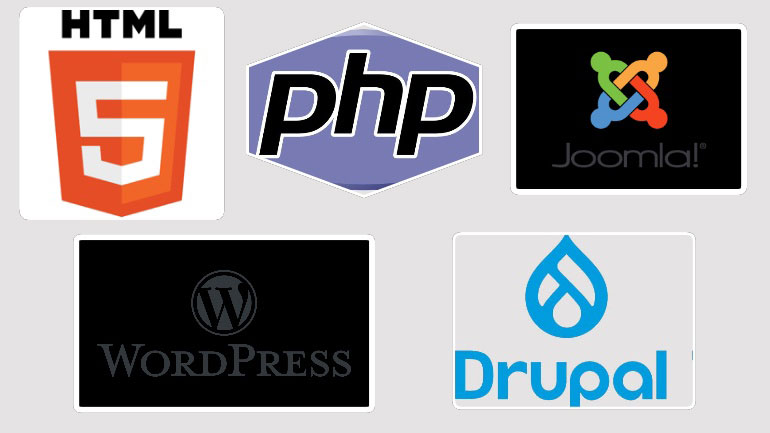Ecommerce websites are there to make sales and deliver the goods.
But what do customers expect from an eCommerce website? We’ve seen trends in eCommerce come and go like 360-degree product previews, video previews, and advanced filtering.
However, trends don’t guarantee conversion rates and will often be replaced by the next big thing. There are certain elements of an eCommerce website that customers have come to expect. These elements should never change.
Emily Cocker, the Senior Digital Strategist of eCommerce website design agency Bigfoot Digital, offered some words of wisdom to help you build a strong foundation for your eCommerce business.
First up, website security…
1) Website Security
Would you hand over your personal details to a site labeled ‘Not Secure.’ Oh, hell no!
I don’t blame you. This big red warning is displayed on websites that don’t have a secure eCommerce website. Without these security features, it’s likely that visitors will leave and your conversion rates will dwindle.
Here are some steps to help you secure your eCommerce site:
Get an SSL certificate: Establishes a secure connection between the site and the user. This will protect all customer information from cybercriminals. As a result, it will boost conversion rates, as a big green padlock will be displayed at the top of your site to show that your site is secure.
Privacy policy in the footer: Addresses the website’s privacy policy, which details how a customer’s data will be used. This is required if you wish to retarget customers with new deals and promotions. It’s especially true with the recent GDPR rules.
Use a firewall: Provides a gateway or barrier between two networks. It prevents malicious traffic from entering your site.
2) Design
Do you remember the last time you walked into a shop like this?

One that was disorganised, cluttered, and had an overall uninviting atmosphere.
On the other hand, what about a shop like the Apple Store?
Everything is clean, clutter-free, and conveniently placed for you to access. The user experience is sleek and controlled.
If you have experienced both shops, which gave you the incentive to purchase? It was probably the shop that cares about its appearance. The same can be said for your eCommerce website design and choose the right eCommerce website platform.
A good design signals that the site cares about its reputation. If a customer enters your eCommerce website and can’t find what they are looking for without complication, you’re doing something wrong. Studies show that 76% of people say that ease of use is the most important aspect of an eCommerce website. Make it easy for customers to get where they want to be – the checkout – without running into any unnecessary complications.
3) Speed
If you’re anything like me, you’ll notice when you visit a speedy site. Pages take no more than two seconds to load, and you spend more time browsing. It just feels smoother and accessible.
Speed will inevitably affect your conversion rates. A slow site will result in people leaving in search of a competitor. Our attention spans are minimal, so a lightning-fast site will help retain visitors for longer.
What’s more, site speed is indirectly a ranking factor. Think about it logically; Google likes to reward sites that are popular and get a lot of traffic. The knock-on effect of a slow site is fewer visitors and referrals. People will stop visiting your site, and your organic traffic will start to drop. Which means that your rankings will also drop. Use a free tool, like Pingdom, PageSpeed Insights to check the speed of your site and get immediate actions. No website is perfect, so there will always be room for improvement.
Some ways to improve site speed are as follows:
Compress Images. Compression reduces response times by reducing the size of the HTTP response. Gzip is the most popular and effective compression method currently available and generally reduces the response size by about 70%.
Use a fast web host. Not all web hosts are made equal. If you have a decent amount of traffic, then don’t just opt for hosting because it’s cheap. WP Engine for the likes of WordPress is unbeatable. It’s lazer fast and has great support – stuff dreams are made of.
Add expires headers. Browsers use a cache to reduce the number and size of HTTP requests and hence making web pages load faster. A web server uses the Expires header in the HTTP response to tell the browser how long a component can be cached.
Switch off all unused plugins. I see a lot of websites that have unused plugins. May plugins require Javascript and CSS, which can slow down your site. Be savvy in your selection of plugins. The same can be said for images and video files – delete what you don’t need.
4) High-Resolution Photography
Gone are the days of posting a grainy image taken on your mobile with a simple one-line description.
Your customers want to see products from all angles, people wearing them, and zooming in on the finer details. Images sell, not text.
Technical considerations are essential. You should optimise all images with a relevant file name, alt text to describe the product and compress them to improve site speed.
This translates across to social media, too. Instagram is home to some of the most impressive product photos. It’s a highly visual platform, which gives you an opportunity to boost sales. Vanity Planet found that adding Instagram photos to their product pages increased conversion rates by 24%!
5) Social Proof
Brands and sellers that take the time to engage with their audience and build trust are the ones that perform best.
Display links to your social media profiles with options to share products with a friend. People are so used to forced marketing messages like ‘buy now’ and ‘click here,’ so a friendly, social approach is refreshing.
User-generated reviews on product pages can help boost sales, too. People read reviews. Most people won’t touch a website if it doesn’t have reviews.
Some people think negative reviews will put people off, which is not always the case. A website with nothing but five-star reviews can seem staged and manipulated. You want authentic reviews that have built up over time. Depending on your website functionality, it’s possible to download plugins that will display reviews from popular platforms, like Facebook and Google.
6) Special Offer
Most eCommerce websites will have discounts and special offers running throughout their promotional material. Email subscribers and returning customers will benefit from weekly updates that land in their inboxes.
Websites also have offers in their headers to entice people as they’re shopping. This screenshot was taken from the header of the Boohoo website. It has an entire section dedicated to offers. You can do more research on Amazon to see how the offer and discount show the customer.
Not only is this great from a user perspective, but also for local SEO. Consider a shopper searching for discounts in their area. As a smaller business focused on attracting local customers or those visiting an area, this is a great little tactic.
7) Wish Lists
Wish lists are an eCommerce companies best friend. They allow people to shop for multiple items at one time.
Shop, save, and share!
Ecommerce websites not using wish lists are throwing potential money down the drain. For example, consider the wedding industry. Brides-to-be are all over the place, shopping for table decorations, guest books, favours, glassware, and more. There is so much shopping to be done. A website that covers wedding decor, like Ginger Ray, will benefit from a favourites section.
Having a favourites section encourages customers to bulk buy items from different sections of the site, without having to revisit each page individually.
8) Related Items
Simply receiving a message on a product page that says “you might like this…” will cause curiosity and excitement to build.
It goes a little like this.
You land on a product page for ‘Bridesmaid Dresses’ and the related search feature bringing up items that complement the one you have landed on. That could be shoes, jewellery or some underwear.
9. eCommerce Platform
Some eCommerce platforms may not allow you to apply your design and codes as same as you want. So keep in mind this thing while designing your online store. Shopify, 3dcard, BigCommerce, WooCommerce, Magento, commercetools are some leading commerce platforms that allow building a website on modern design principles.
So these are the basic things to consider while designing your e-commerce store.






